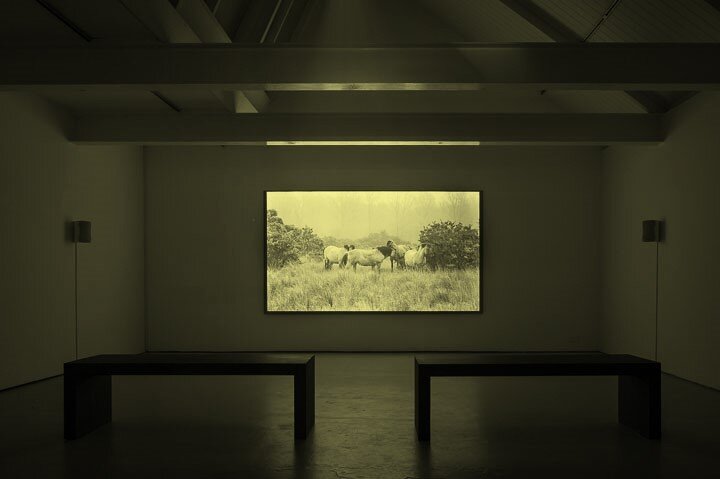#109 Jessica Warboys, Boudica
2 - 21 May
Jessica Warboys was born in Newport. She studied at Falmouth and the Slade. Jessica currently lives and works in Suffolk and Berlin.
A conversation between Jessica Warboys and Amy Leach.
Amy Leach: What initially drew you to Boudica as a subject or reference point?
Jessica Warboys: With Adam Pugh we discussed beginning the film project with a reference to the locality; Boudica sprung to mind.
AL: You’ve spoken about the ambiguity of Boudica, particularly the variable spelling of her name. I was interested by the way in which you utilised this historical uncertainty as a point of departure or space to occupy and wondered if you could talk a little about the content of the film.
JW: Boudica as a motif is full of holes, her image has been borrowed by past queens, patriots and romantics. As a persona, with little known facts or evidence surrounding her, she is the material of myth. Her presence in the film is edited with sculptures, fires and horses, there’s a narrative, but essentially the plot retains the ambiguity which has always surrounded her.
AL: There are a number of props and sculptural objects which appear, made by students from Ecole d’Enseignement Supérieur d’Art de Bordeaux. They’re an enigmatic presence. Could you speak about their role in the film?
JW: As there isn’t any archaeological evidence surrounding Boudica and her battles, apart from layers of ashes beneath Colchester and London. I took this fact as an opening to make imagined artefacts as a kind of experiment. I was looking for objects made unwittingly or casually, outside of a particular context, so this was a way to collect crafted and found props, whilst working alongside the students.
AL: You often work with analogue film and have used 35mm for the first time here. Why did you chose to work in this particular format? And more generally what interests you about working with analogue film?
JW: I enjoy working with film itself, the conditions of light, metering, distance, having a limit on time - these all impose a finality on the footage of film. Film’s relationship with painting is also important. I see a logic between the processes/methods I use, in painting and sculpture, by which I mean lengths of film are exchanged for lengths of canvas and the pigment image of a painting could be seen to relate to gesture as the grain of film relates to light and time.
This time I had the chance to work with 35mm, as camera operator Ville Piippo, whom I have worked with on films for almost 5 years, had recently aquired the camera. It made sense, as I was interested in seeing how the wider range of 35mm would affect the image, having worked with 16mm on the previous films.
AL: You’ll also presenting a performance, alongside Morten Norbye Halvorsen and Ruby Raven, for the opening. How would you describe it and its relation to the exhibition for anyone visiting later in the month?
JW: The performance is an opportunity to bring the performance of Ruby Raven – Hula Hooper and Morten Norbye Halvorsen out from the filmic space into the exhibition space. A physical embodiment of Boudica to open the event.






